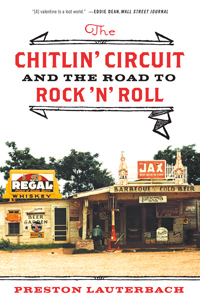Circuit business operatives thrived not just despite racial segregation but because of it, taking advantage of Jim Crow geography. Black life in towns and cities centered in one crowded district, usually with one major thoroughfare, where you could buy a pint, get a shoeshine, join a backroom craps game, or catch a performance of one the day’s leading entertainers. It was the heart of darktown, or, in 1930s hep speak, The Stroll. Beale Street in Memphis and Rampart in New Orleans were already legendary strolls when the chitlin’ circuit got rolling, but by the late 1930s, stroll lifers on Second Street in Muskogee, Oklahoma, Desiard Street in Monroe, Louisiana, and W. Ashley in Jacksonville, Florida were part of it.
The circuit as a whole was the sum of these parts, scores of black districts stretched across the map, performers traveling dot to dot. It was modeled after two wildly successful segregated business models, that of the black-nationally circulated Chicago Defender and the Madam C.J. Walker cosmetics system—that keyed on black population density and made real money cumulatively. Walker trained African-American hair stylists throughout the country to use Walker beauty techniques and to sell Walker beauty products, and funnel the money back to her.
Similarly, the chitlin’ circuit’s first overlord, Denver Ferguson, understood stroll dynamics. Knowing where stroll social hubs were, Ferguson recruited barbers and bartenders to promote his shows. Ferguson’s protégé Sax Kari said, “He took small town people and made them dollar wise.”
Just as segregation gave rise to this innovative black enterprise, integration forever changed the conduct of circuit business and brought an end to the chitlin’ circuit’s road to rock ‘n’ roll era.




